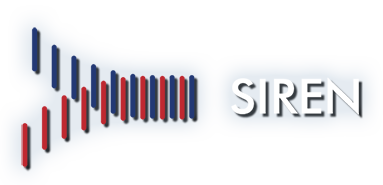BOOST III - Brain Oxygen Optimization in Severe TBI Phase III
PI: Ramon Diaz-Arrastia, MD, PhD - University of Pennsylvania
Status: Approved, Enrolling
Traumatic brain injury (TBI) is a major cause of death and disability. Of the 3.5 million Americans who sustain a TBI every year, approximately 27,000 experience prolonged traumatic coma, the most severe form of TBI. Less than 20% of these patients make a good recovery, and most are left with life-long disabilities. ICU management of severe TBI focuses on monitoring intracranial pressure (ICP), but data from recently conducted randomized clinical trials indicate that this approach is overly simplistic. Another approach is to monitor the partial pressure of oxygen in brain tissue (PbtO2), and apply interventions to prevent brain tissue hypoxia and improve neurologic outcome. Clinical studies demonstrate that brain tissue hypoxia is common, that there is a strong relationship between low PbtO2 and poor outcome, and that timely interventions can reverse brain tissue hypoxia. The first randomized controlled trial of PbtO2 monitoring in severe TBI, titled “Brain Oxygen Optimization in Severe TBI (BOOST) Phase 2,” enrolled 122 subjects, and demonstrated that the mean hypoxia burden was reduced by 74% by the treatment protocol informed by PbtO2 monitoring (p < 0.0001), and there were no significant safety issues. There was a trend towards improved functional outcome, supporting the pre-determined non-futility hypothesis. We are proposing the BOOST-3 trial to determine if there is evidence of clinical efficacy of a treatment protocol based on PbtO2 monitoring compared to treatment based on ICP monitoring alone. BOOST-3 will enroll patients with severe TBI requiring placement of ICP monitors within 6 hours of injury. Patients will be randomized to a treatment protocol based on ICP monitoring alone or the combination of ICP and PbtO2 monitoring. The Glasgow Outcome Scale-Extended (GOS-E) measured at 6 months post injury will be the primary outcome. Other secondary outcomes include functional, cognitive and behavioral assessments at 6 months, safety, survival to discharge, shortened time to follow commands, and reduction of total brain hypoxia exposure.
HOBIT - Hyperbaric Oxygen Brain Injury Treatment Trial
PI: Gaylan L. Rockswold, MD - Hennepin County Medical Center
Status: Approved, Enrolling
Preclinical and clinical investigations (discussed below) strongly indicate that HBO2 is physiologically active in reducing brain injury and improving outcomes in severe TBI. However, prior to a definitive efficacy study, important information is required regarding optimizing the HBO treatment paradigm instituted in terms of pressure and frequency of HBO2 treatments and whether NBH enhances the clinical effectiveness of the HBO2 treatment. Preclinical investigators working with TBI models have used pressures varying from 1.5 to 3.0 atmospheres absolute (ATA). Clinical investigators have used pressure varying from 1.5 to 2.5 ATA. However, the lungs in severe TBI patients have frequently been compromised by direct lung injury and/or acquired ventilator pneumonia and are susceptible to oxygen (O2) toxicity. Working within these constraints, it is essential to determine the most effective HBO2 dose schedule without producing O2 toxicity and clinical complications. This proposed clinical trial is designed to answer these questions and to provide important data to plan a definitive efficacy trial.
ICECAP - Influence of Cooling Duration On Efficacy in Cardiac Arrest Patients
PI: William Meurer, MD - University of Michigan; Robert Silbergleit, MD - University of Michigan; Romer Geocadin, MD - Johns Hopkins University
Status: Approved, Enrolling
Neurological death and disability are common outcomes in survivors of cardiac arrest. Therapeutic cooling of comatose patients resuscitated from shockable rhythyms has been shown in two randomized controlled trials to markedly increase the rate of good neurological outcome, but the optimal duration of induced hypothermia has not been investigated. ICECAP is a randomized adaptive clinical trial to characterize the duration‐response curve of induced hypothermia in comatose survivors of cardiac arrest and to determine the optimal duration of cooling. Subjects will initially be randomized to 12, 24, or 48 hours of cooling. After 150 subjects have been enrolled, response adaptive randomization will allocate subjects to a shorter duration (6 hours) if the developing model suggests a flat durationresponse curve, or to longer durations (60 or 72 hours) if the developing model suggests a positive but not yet plateauing duration‐response curve, and to the original and interposed durations (18, 30, 36, 42 hours) as needed to refine the model. Comatose adult survivors of cardiac arrest from shockable rythyms that have already been rapidly cooled using a definitive temperature control method (endovascular or surface) will be enrolled. The primary outcome will be modified Rankin score at 90 days analyzed as a weighted score incorporating both the proportion of subjects achieving a good neurological outcome and degree of residual functional impairment among those with good neurological outcomes.
P-ICECAP - Pediatric Influence of Cooling duration on Efficacy in Cardiac Arrest Patients
PI: Frank Moler, MD - University of Michigan
Status: Approved, Enrolling
This is a multicenter trial to establish the efficacy of cooling and the optimal duration of induced hypothermia for neuroprotection in pediatric comatose survivors of cardiac arrest.
The study team hypothesizes that longer durations of cooling may improve either the proportion of children that attain a good neurobehavioral recovery or may result in better recovery among the proportion already categorized as having a good outcome.
Coming soon
Click here for all the completed SIREN-NETT trials.
